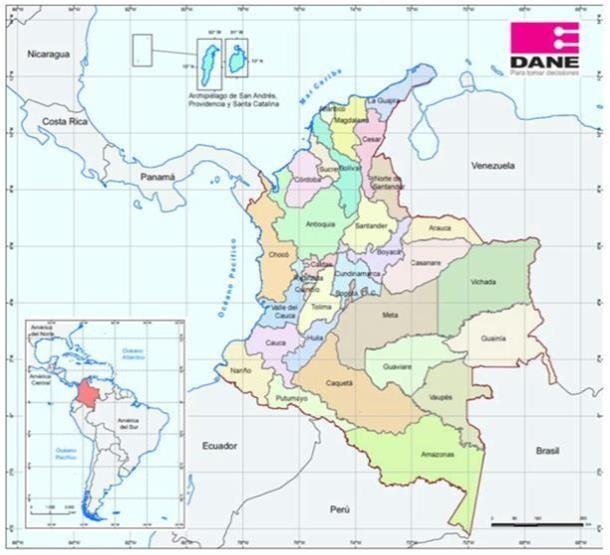According to statistics compiled by Banco de la República, total trade in goods, including exports and imports, decreased 14.7% in 2016, increased 8.7% in 2017, increased 11.6% in 2018, decreased 1.1% in 2019 and decreased 19.6% in 2020. In 2016, direct investment increased $1.8 billion, or 24.3%, mainly due to an increase in net incurrence of liabilities of $2.1 billion due to an increase of debt instruments of $2,666 million. In 2017, direct investment increased by $0.8 billion, or 8.8% compared to 2016, mainly due to an increase in equity and investment funds of $2,868 million. In 2018, direct investment decreased by $3.7 billion, or 36.8%, due to a decrease in net incurrence of liabilities of $2.3 billion, mainly due to a decrease of $1.7 billion in the transportation and communication sector. In 2019, direct investment increased by $4.8 billion, or 74.1%, mainly due to an increase in net incurrence of liabilities of $2.8 billion due to an increase of equity and investment funds of $2.0 billion. In 2020, direct investment decreased by $4.8 billion, or 43.1%, mainly due to a decrease in net incurrence of liabilities of $6.2 billion due to a decrease of equity and investment funds of $6.3 billion. In the first quarter of 2021, total trade in goods, including exports and imports, increased 2.1% compared to the same period of 2020, and direct investment decreased by $327 million, or 14.9%, mainly due to a decrease in net incurrence of liabilities of $422 million due to a decrease in equity and investment fund participations and debt instruments.
Banco de la República’s net international reserves decreased by 0.1% in 2016, and increased by 2.0% in 2017, 1.6% in 2018, 9.9% in 2019 and 11.0% in 2020. As of July 31, 2021, net international reserves decreased by 0.3%.
Balance of Payments
Colombia’s current account registered deficits from 2016 to 2020, recording shortfalls of $12,782 million in 2016, $10,744 million in 2017, $13,669 million in 2018, $14,508 in 2019 and $9,326 million in 2020. In 2016, the trade balance recorded a deficit of $9,176 million, a decrease of $4,303 million from 2015. The lower deficit was mainly due to a decrease of $8,812 million in imports primarily caused by a decrease in imports of capital goods, which decreased by $5,065 million or 27.2%, and a decrease in imports of raw materials and intermediate products of $2,964 million, or 12.7%, compared to 2015. In 2017, the trade balance registered a deficit of $4,470 million, a decrease of $4,705 from 2016. The decrease in the deficit was due to an increase in exports of $5,714 million, mainly due to an increase of $2,751 million or 59.3% in the exports of coal. In 2018, the trade balance registered a deficit of $5,275 million, an increase in the deficit of $804 million compared to 2017, mainly due to an increase of $5,287 million in imports primarily caused by an increase in imports of raw materials and intermediate products of $2,402 million, or 11.5%. In 2019, the trade balance registered a deficit of $8,629 million, an increase of $3,354 million compared to 2018, mainly due to a decrease of $2,180 million in exports primarily caused by a decrease in exports of coal, which decreased $1,780 million, or 23.9%. In 2020, the trade balance registered a deficit of $8,017 million, a decrease of $612 million from 2019. The lower deficit was mainly due to a decrease in imports of $9,419 million primarily caused by a decrease in imports of raw materials and intermediate products, which decreased by $4,326 million, or 18.3%, compared to 2019, and a decrease in imports of capital goods and construction materials of $3,058 million, or 18.5%, compared to 2019. In the first quarter of 2021, the trade balance registered a deficit of $2,668 million, a decrease of $568 million compared to the same period in 2020, mainly due to a decrease of $64 million in exports primarily caused by a decrease in exports of coal, which decreased $649 million, or 40.3% compared to the same period of 2020.
In recent years, Colombia has registered deficits in the primary income of the current account because inflows from its foreign assets have not been sufficient to offset the interest payable on its foreign liabilities. Each of the last five years ended with a deficit: $5,229 million in 2016, $8,408 million in 2017, $11,773 million in 2018, $10,230 million in 2019 and $5,601 million in 2020. In the first quarter of 2021, Colombia also registered a deficit in the primary income of the current account of $2,161 million. The secondary income category, however, registered inflows of $5,898 million in 2016, $6,611 million in 2017, $7,643 million in 2018, $8,704 million in 2019 and $8,732 million in 2020 and $2,469 million in the first quarter of 2021. Of total expenditures, 46.7% corresponds to income earned by enterprises with foreign direct investment, and to a lesser extent in interest payments on debt securities, loans and other foreign credits, which increased mainly due to an increase in income earned by enterprises with foreign direct investment. Colombia has also continued to experience deficits in the services category in recent years because of decreased participation by Colombian shipping companies in the international freight market, falling international transport fares, reduced income from tourism and increased costs related to business and construction activities. However, the deficit in the services category recorded an improvement in 2016 due to a higher income for services of $8,706 million and lower expenses of $12,981 million. Conversely, in 2017, the deficit in the services category recorded a deterioration due to higher expenses of $14,013 million. In 2018, the
D-57
